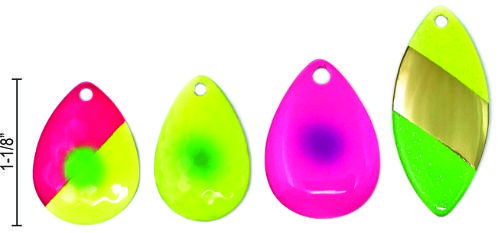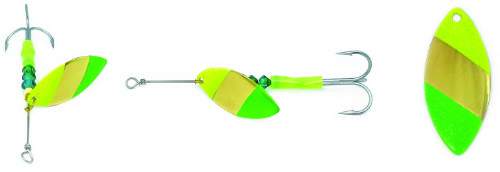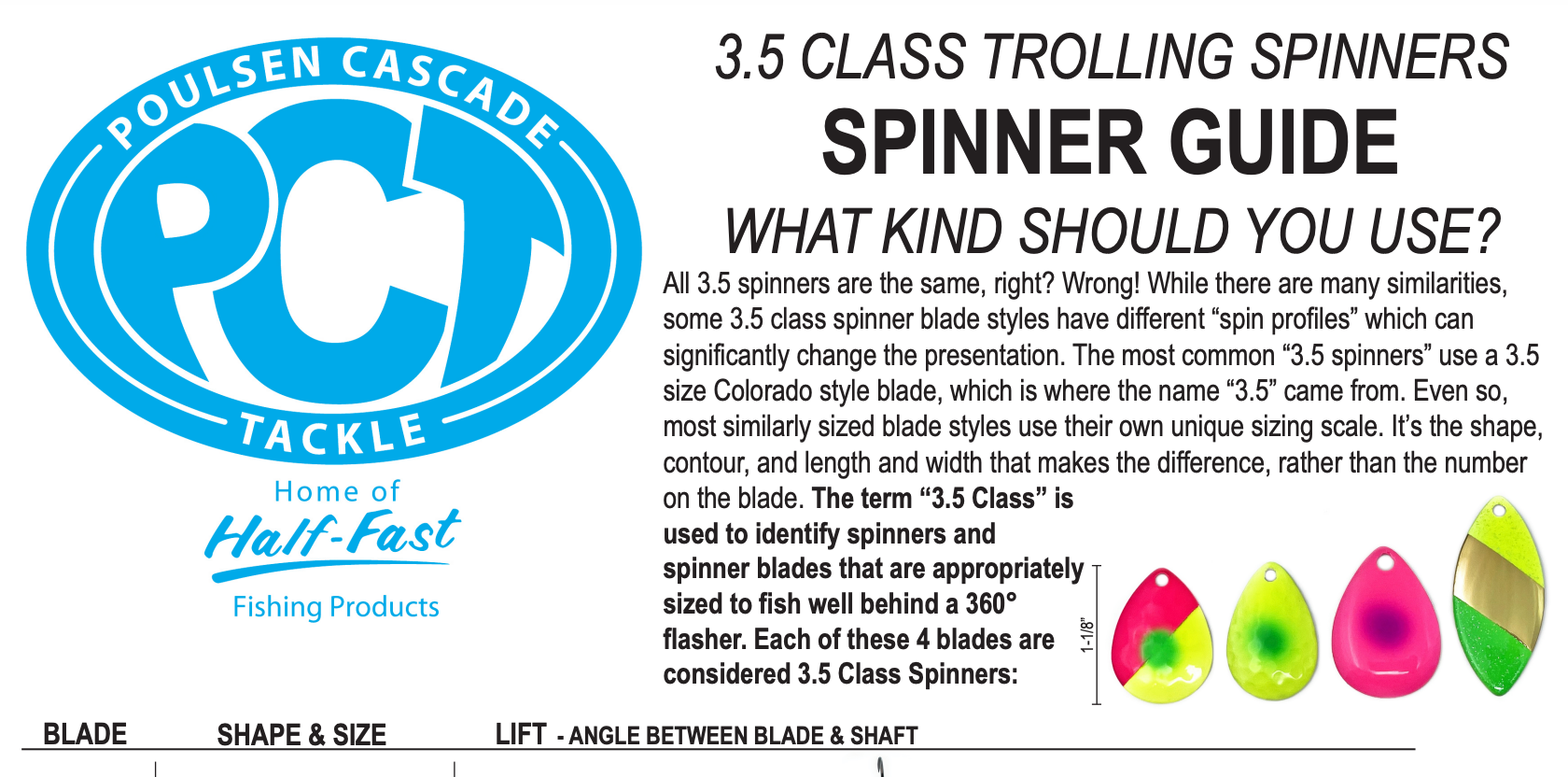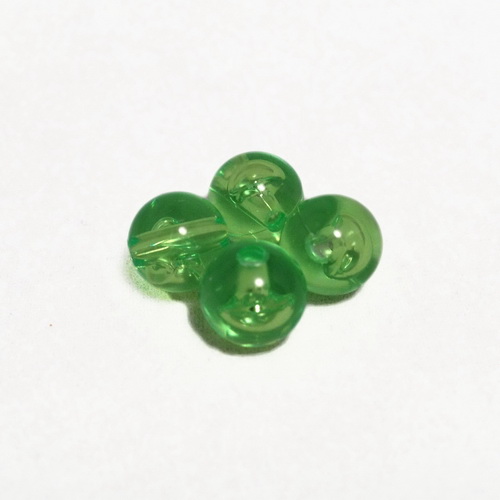3.5 Spinners for Salmon
What Size Spinner for Salmon is Best?
Not so long ago, spinner fishing for salmon was a matter of large spinners with a distinctive ‘thump.’ Anglers in the know wanted to see their rod tip bouncing to the beat of the spinner blade as they trolled the rivers and bays in pursuit of king salmon.
The ‘thump’ accomplished a couple of vital functions:
- First, if it was thumping, it was working. The thump would change or stop entirely if the spinner got fouled with weeds or even on its own line. You knew it was time to reel it in and clear the mess.
- Second, and probably more importantly, if the thump stopped and the line went slack—even a little—you knew your spinner had likely been picked up by a salmon headed toward your boat. For those who could recognize these ‘slack-line bites, ’ the time to set the hook had been signaled.
- Finally, there is speculation that the thump generates additional attraction as it sends low-frequency sound waves out into the water.
Those large spinners like the old T-Spoons and Cascade #7s will still produce just like they always did. But trends change, often for a good reason. Such is the case for the 3.5 salmon spinner craze.
Some years ago, serious salmon anglers and guides discovered the benefits of 360° flashers (those with agitator rudders). Although they had been used for trolling with bait set-ups since they hit the market, it took the innovative thinking of a few to discover how effective they were when rigged with a spinner.
The problem was that most traditional salmon spinners were too large to allow the flasher to rotate as designed.
The solution? A smaller spinner!

Sounds simple enough, but the right balance of attraction and action had to be coupled with a hook that was not so large as to throw the whole works out of balance, yet strong enough to handle a battling Chinook salmon.
Through trial and error, guides and serious salmon anglers developed a spinner that employed a 3.5 size Colorado style blade with a size 1 or 1/0 hook. That allowed the desired action and just enough hook to handle the target fish (most of the time). And thus, the 3.5 spinner craze was born. And so was a mindset that only a 3.5 spinner would work.
While perfectly understandable, this thinking obscures the fact that other spinner styles and sizes will also work behind a 360° flasher. The issue is that every spinner style has its own unique sizing scale. Also, the actual size of the spinner that will allow a flasher to rotate properly depends as much on the shape and contour as the length and width. The 3.5 designation applies primarily to Colorado style blades. But other spinners and sizes also work.
For example, while a slightly different shape, a size 1 Bear Valley style blade is approximately the same length and width as a size 3.5 Colorado. Furthermore, since it is more pear-shaped than the rounder Colorado, it actually trolls with a bit less resistance and so allows a slightly freer rotation of the flasher.
Here’s a different comparison. A Wise Guy blade is longer but has a slimmer profile with a shallower-cupped contour. Because of the hydro-dynamics of the longer Wise Guy blade, the flasher can still rotate well, but the spinner will have a much different profile and look to a salmon.
You can see in this video how even though the Wise Guy 3.5 Spinner Blade appears larger than a 3.5 Colorado blade, it still allows a 360° flasher to rotate freely.
To simplify the whole 3.5 mindset and reduce confusion about actual spinner sizes, it can be helpful to think of all spinners that troll well behind a 360° flasher as 3.5 class spinners. It is not the stated size for a spinner or spinner blade that counts, but rather how it behaves when trolled behind.
To help illustrate, click to check out the ‘Tech Sheet’ (click here).
Poulsen Cascade Tackle, based in the Pacific Northwest, specializes in crafting high-quality tackle solutions tailored to the needs of dedicated anglers. Renowned for innovative designs, exceptional craftsmanship, and the use of premium materials, the company is a trusted name in the fishing community.
We invite you to Share Your Thoughts and Questions. Please Submit Your Comments.




